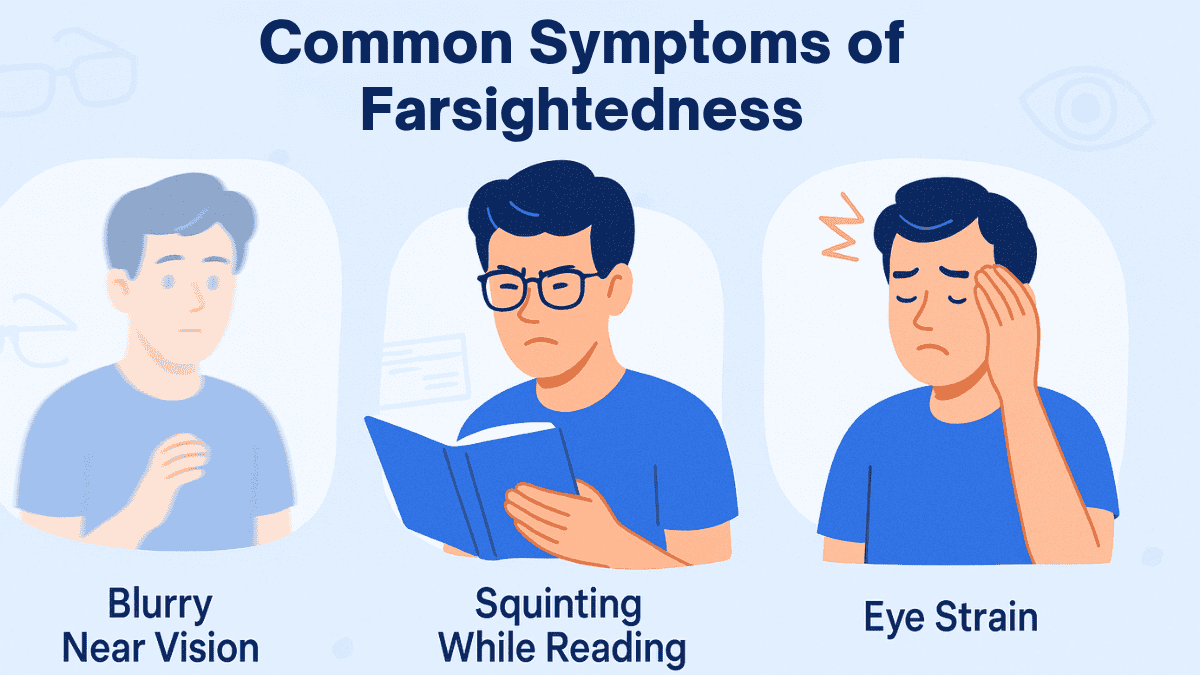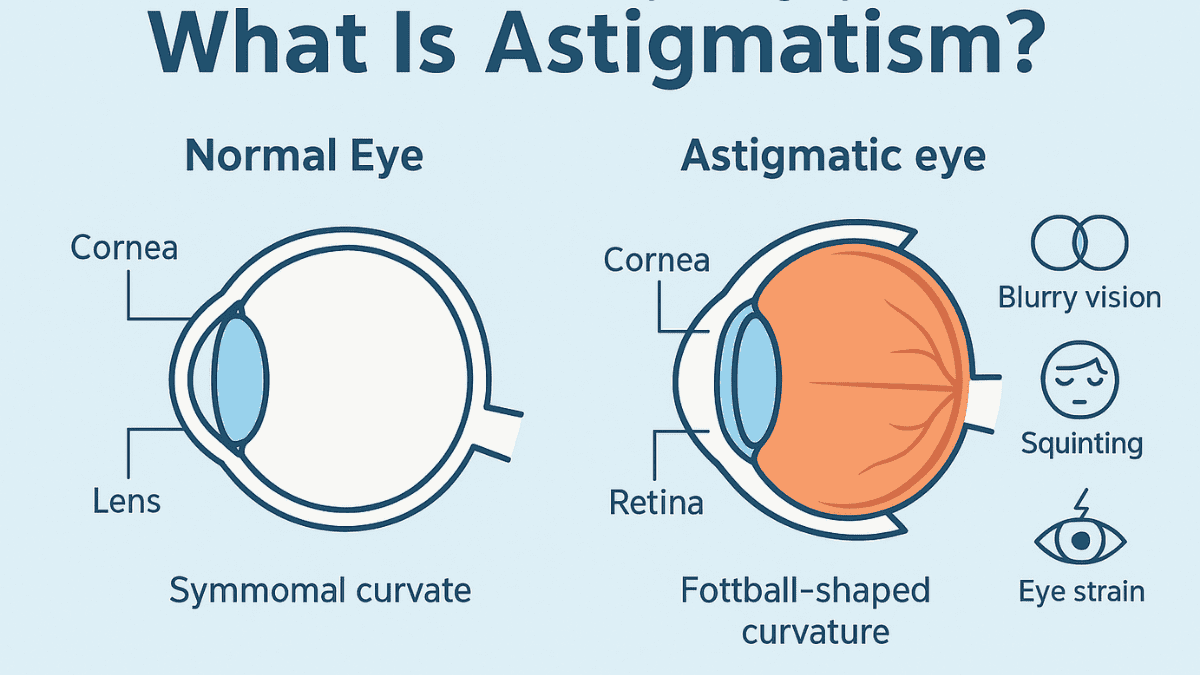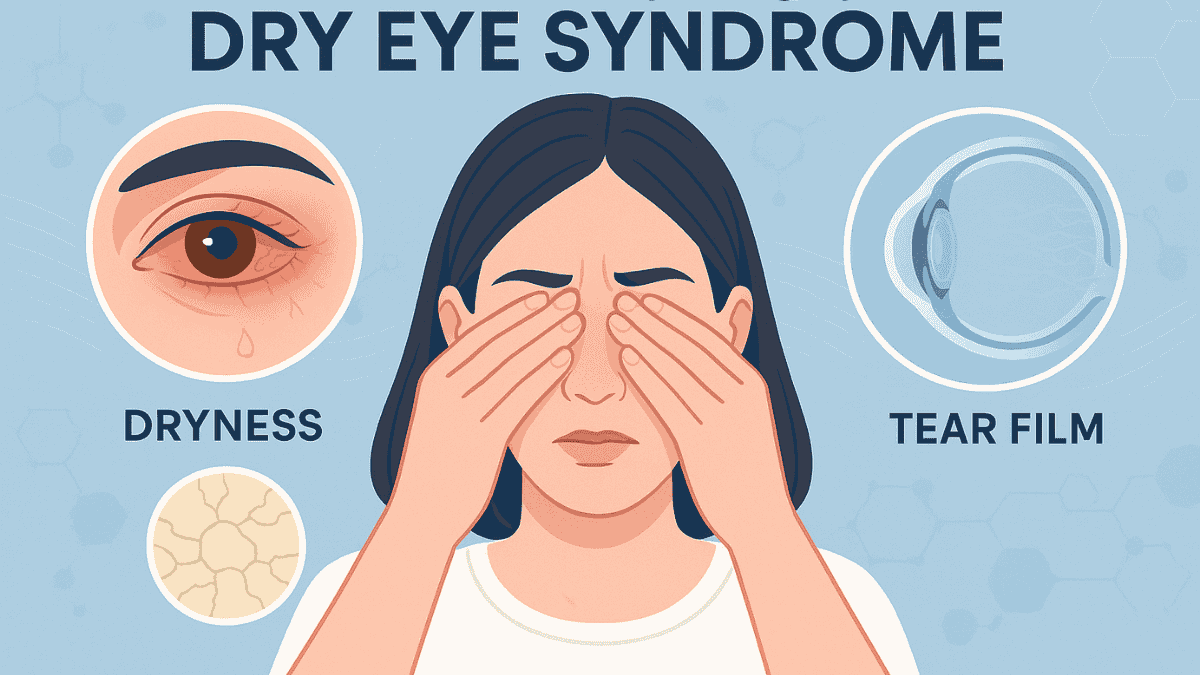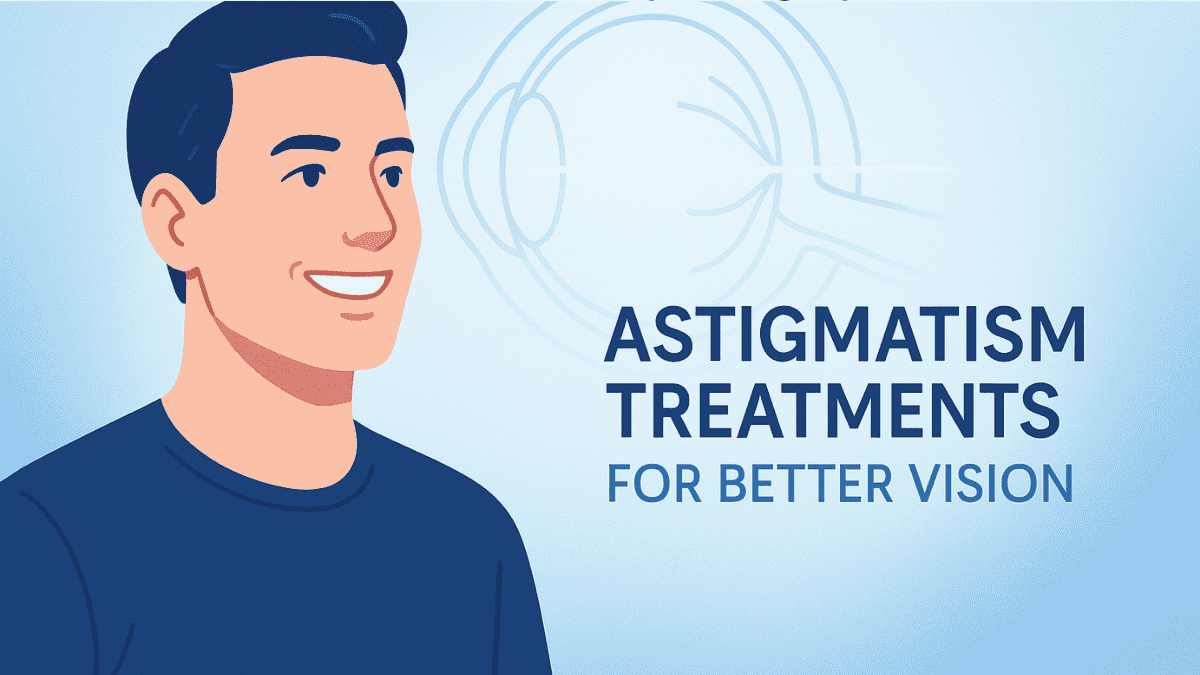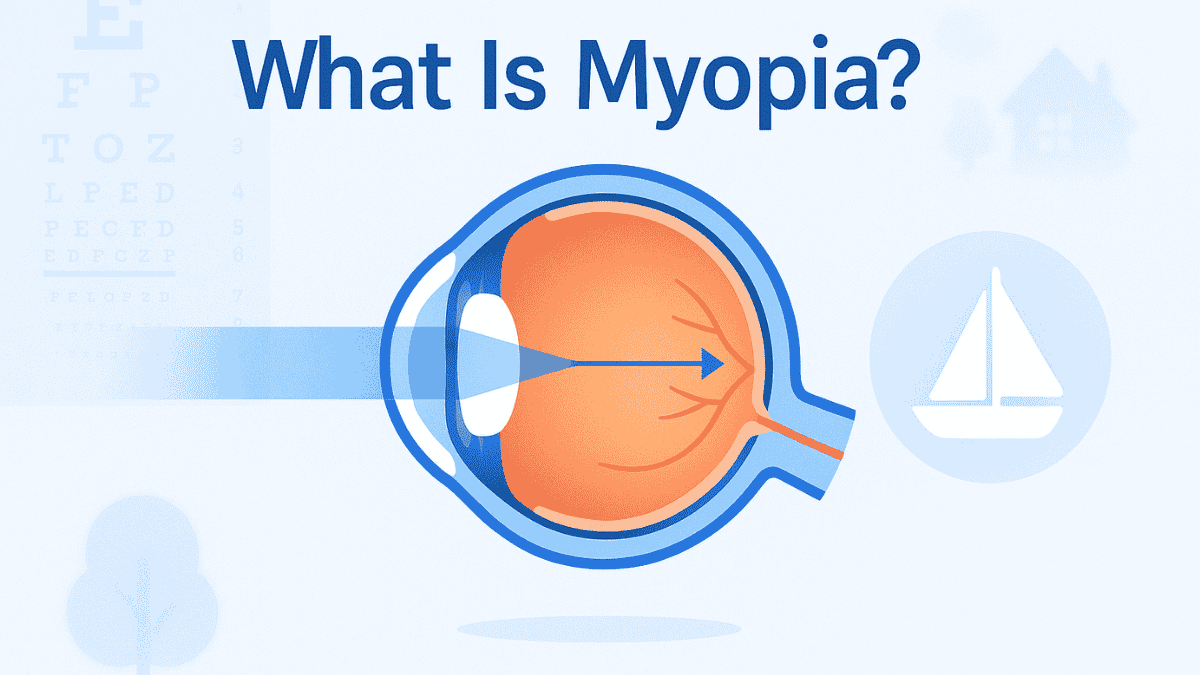
Do you find yourself squinting at road signs, or does the whiteboard in class look a bit fuzzy? If distant objects appear blurry while things up close, like a book or phone, are clear, you might be wondering about your vision. This common experience often leads people to ask: what is myopia?
Understanding this prevalent eye condition is the first step for seeing the world with greater clarity. This article will explore myopia, covering its causes, symptoms, and how it’s managed. Let’s look into this important aspect of eye health.
Table of Contents
So, What is Myopia Exactly? A Simple Look
Myopia is the medical term for nearsightedness, a common refractive error. It means you can see objects close to you clearly, but distant objects appear blurry. Essentially, your eyes focus light incorrectly, making images form a little short of where they should.
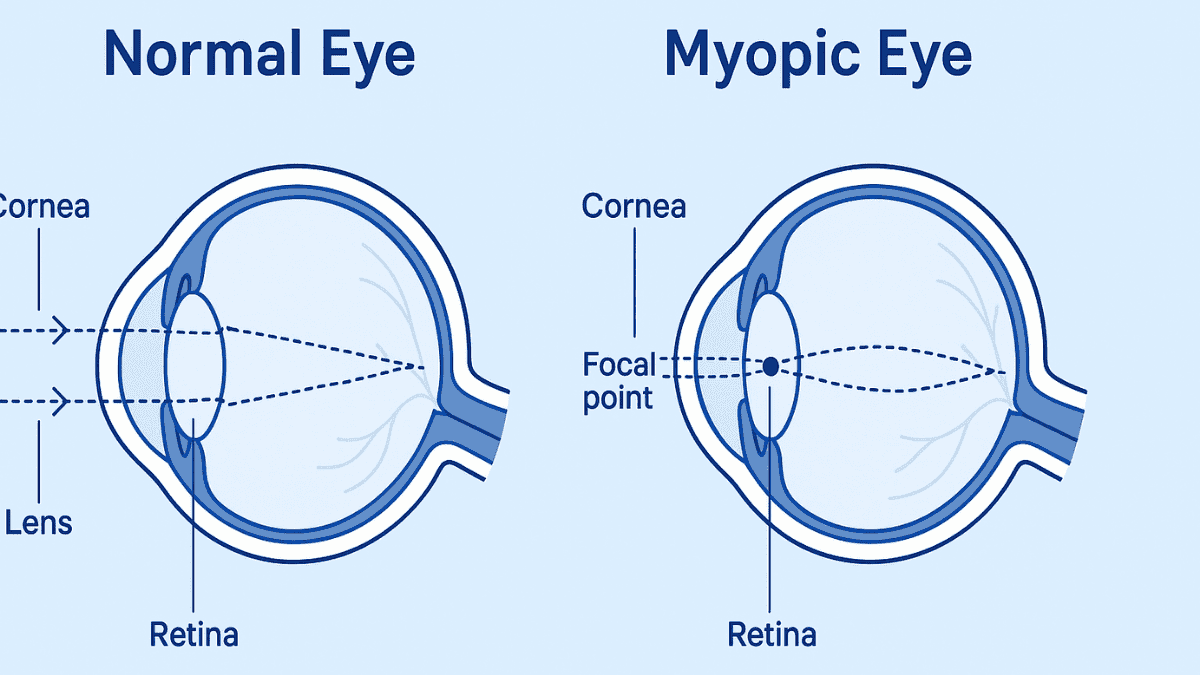
Your eye typically functions like a camera. Light rays enter and are focused precisely on the retina, a light-sensitive tissue at the back of your eye. The retina converts these light rays into signals for your brain, which then interprets them as images, allowing for clear distance vision and near vision.
In a myopic eye, this focusing mechanism is altered. The light doesn’t land correctly on the retina; instead, it focuses at a point in front of it. This misdirection causes the signals for distant objects to become muddled, resulting in blurry vision for those objects, like a misdirected spotlight not hitting its target.
The Science Behind Why You Might Be Nearsighted
To understand why myopia occurs, we need to examine the eye’s physical characteristics. Two primary factors usually contribute to this focusing error. These involve the shape and length of your eyeball or the curvature of your cornea and lens.
Eye Shape and Length Matter
Frequently, myopia develops because the eyeball is slightly too long from front to back, a condition known as axial myopia. This is the most common reason for nearsightedness. Due to this elongation, the distance between the cornea, the eye’s clear front surface, and the retina increases, meaning light rays converge before they reach the light-sensitive retinal layer.
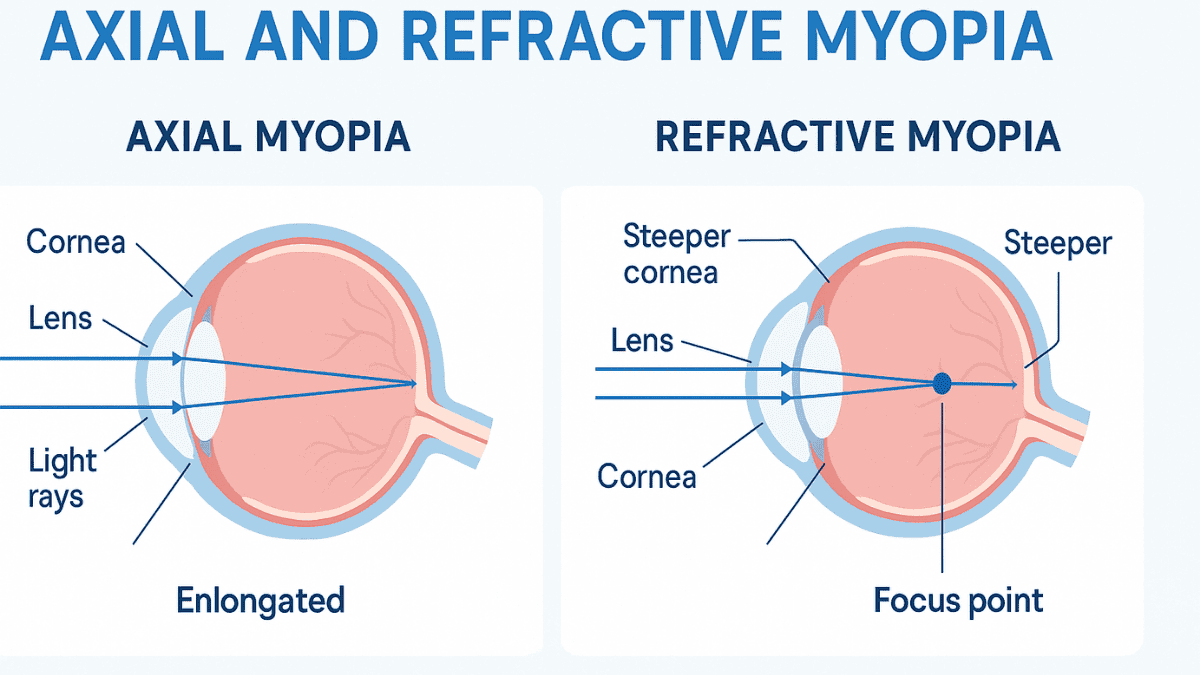
In other cases, the eyeball’s length is normal, but the corneal tissue or the lens inside the eye is excessively curved; this is termed refractive myopia. A more pronounced curve on the cornea or lens bends light more intensely. This increased refractive power causes light to focus in front of the retina rather than directly upon it, even with a normal eye length.
How Light Misbehaves in a Myopic Eye
Consider how light rays enter your eye for vision to occur. For clear sight, these rays must converge perfectly on your retina. The retina functions like a screen where the image is projected, and your eyes focus light onto it.
In an eye with myopia, due to its axial length or the refractive power of its lens, these light rays reach their focal point prematurely. Consequently, when the light information arrives at the retina, it has diffused from a sharp point. This diffusion results in objects blurred at a distance.
Recognizing the Signs: Symptoms of Myopia
The indications of myopia can develop gradually, and you might not initially realize your vision isn’t optimal. However, common nearsightedness symptoms often point towards this condition. Recognizing these signs early is beneficial for eye health.
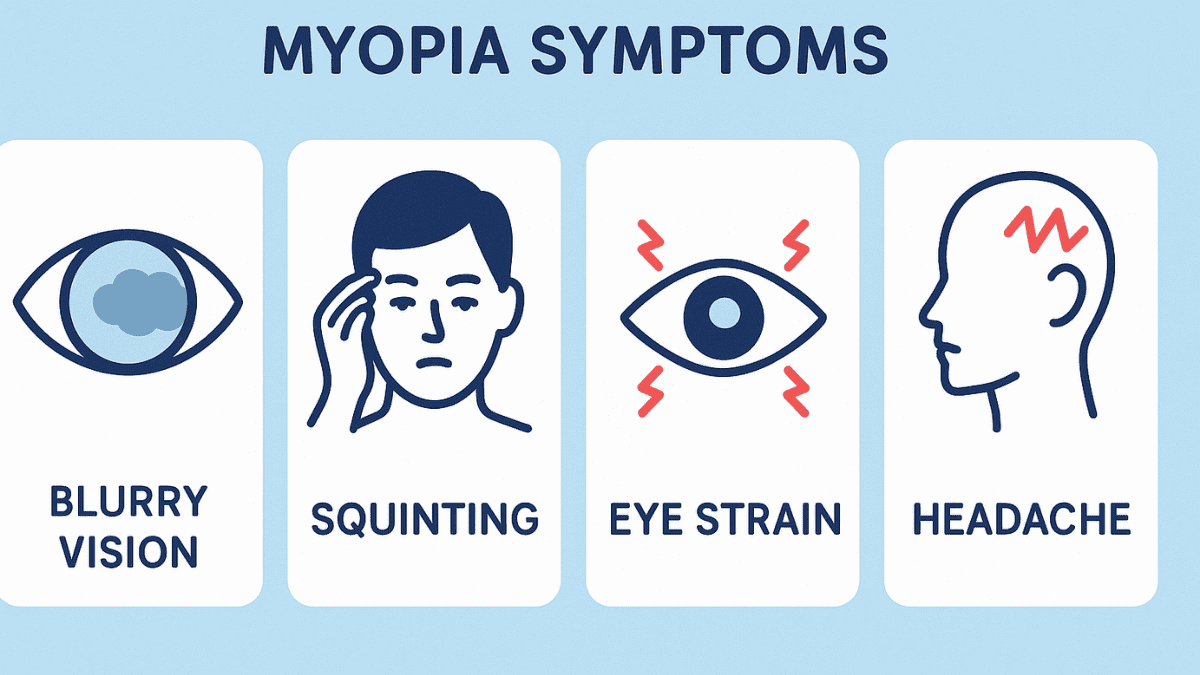
The most apparent symptom is vision blurry when observing distant objects. This can manifest as difficulty reading road signs, seeing television clearly from afar, or recognizing faces from a distance. Children with myopia may find it hard to see the board clearly in school.
Other signs include frequent squinting in an attempt to improve focus. You might experience eye strain, which can present as tired or aching eyes. Headaches can also be a symptom, particularly after prolonged efforts to focus on distant items. If you notice these issues, an eye exam is recommended.
Who Gets Myopia? Risk Factors to Know
Myopia can affect anyone, but certain individuals have a higher predisposition. Various risk factors contribute to its development. These elements range from genetic inheritance to daily lifestyle habits, and understanding them can help in assessing personal myopia risk.
Genetic Links Are Strong
Your family history significantly influences whether you will develop myopia. If one or both parents, or other close family members, are nearsighted, your likelihood of developing the condition increases. Scientific research has pinpointed several genes linked to myopia, underscoring its hereditary aspect.
Environmental Influences Also Play a Role
Your daily activities and environmental factors also play a crucial role in your myopia risk. Significant screen time, extensive work reading, or other prolonged close-up tasks are established risk factors. This type of sustained near work is thought to encourage the eyeball to elongate over time.
Conversely, research indicates that spending more time outdoors, particularly during early childhood and the teen years, may reduce the risk of developing myopia. Playing sports or engaging in other outdoor activities can be beneficial. The precise mechanisms are still under investigation but may involve exposure to natural light and the eyes focus on distant objects more frequently.
Understanding these risk factors is important for both parents and individuals. Here’s a summary of key influences:
| Risk Factor Category | Specific Examples | Impact on Myopia Development |
|---|---|---|
| Genetics | Having nearsighted family members. | Significantly increases personal myopia risk. |
| Near Work Activities | Prolonged reading, extensive screen time, detailed close-up work reading. | May encourage eye elongation, leading to myopia. |
| Outdoor Time | Limited time spent outdoors, especially in childhood. | Lack of outdoor exposure is linked to higher myopia incidence. |
| Environmental Factors | Modern lifestyles with increased indoor activities. | Contributes to the rising prevalence of myopia globally. |
Being aware of these factors can help in adopting preventive strategies where possible. For instance, balancing screen time with outdoor activities is often recommended for a child’s eyes.
Age of Onset Varies
Myopia childhood onset is common, typically appearing between ages 6 and 14. The condition can worsen as a child grows, particularly during the teen years. Vision generally stabilizes in early adulthood, often by the early twenties.
However, myopia can also manifest in adults. This may occur due to significant visual stress from demanding work reading or specific health conditions like diabetes. For some individuals, myopia progression can continue into their adult years.
Diagnosing Myopia: What to Expect at the Eye Doctor
If you suspect you have myopia, visiting an eye doctor is essential to diagnose myopia accurately. Regular eye exams are important for everyone, not just for those with suspected vision problems. These check-ups, sometimes prompted by initial vision screenings, are crucial if you’re experiencing difficulties seeing clearly.
An eye doctor, either an optometrist or an ophthalmologist, conducts a thorough eye examination. This includes a visual acuity test, where you read letters on an eye chart (commonly a Snellen chart) from a specified distance. This test measures your ability to see detail compared to standard normal vision.
A critical component of how myopia is diagnosed occurs is the refraction test. During this, the doctor uses a phoropter, an instrument with multiple lenses. You will look through various lenses at the eye chart and indicate which ones clarify your vision, helping the doctor determine if your eyes focus correctly.
This process helps establish the precise prescription needed if you have myopia or other refractive errors, such as astigmatism or hyperopia. Your myopia prescription is documented in diopters; a negative value, such as -2.00 D, signifies myopia. The higher the number (e.g., -5.00 D is higher myopia than -2.00 D), the greater the degree of nearsightedness and the more correction needed, meaning objects blurred will be more pronounced without correction.
Mild myopia is generally considered up to -3.00 D, while moderate myopia can range up to -6.00 D. High myopia is typically above -6.00 D, and this higher number is associated with increased risks for other eye conditions, reinforcing the importance of regular eye exams to monitor any progression.
Managing Myopia: Ways to See Clearly Again
Fortunately, once myopia is diagnosed, there are effective ways for how myopia is treated and managed. Several methods can treat nearsightedness and restore clear distance vision. The most suitable option depends on your individual needs, lifestyle, and overall eye health.
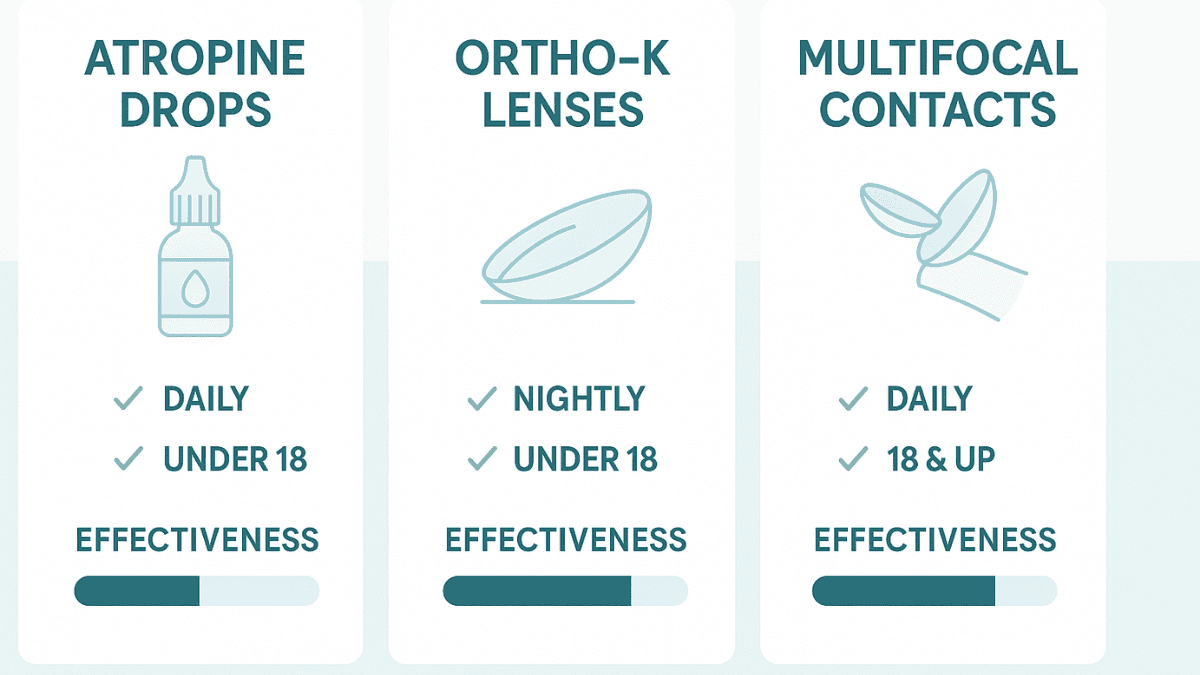
Corrective Lenses: The Common Solution
The most common methods for vision correction involve eyeglasses or contact lenses. These lenses correct myopia by being concave, meaning they are thinner at the center and thicker at the edges. This design helps diverge light rays before they enter the eye, and many people wear glasses as their primary correction.
This divergence shifts the focal point backward, enabling light to focus correctly on the retina. Prescription glasses are a straightforward and safe choice for many individuals. For those seeking an alternative, contact lenses correct vision by sitting directly on the eye, offering a wider field of clear vision and potentially being preferred for activities like playing sports; often a single-vision lens is prescribed initially.
Refractive Surgery: A More Permanent Fix
For adults with stable vision, refractive surgeries offer a more lasting solution. Procedures such as LASIK (laser-assisted in situ keratomileusis), often referred to as laser eye surgery, or PRK (photorefractive keratectomy) reshape the corneal tissue. This corneal refractive alteration changes how the eye focuses light, aiming to correct nearsightedness permanently.
These surgical interventions can diminish or even obviate the need for glasses or contact lenses. However, refractive surgery is not appropriate for all individuals and involves certain risks. An eye care professional can evaluate your suitability for such procedures and discuss potential outcomes.
Myopia Control: Slowing Things Down
For children especially, myopia control is an area of increasing focus among eye care professionals. These myopia treatments are designed to slow the progression of nearsightedness, rather than merely correcting current vision. This approach is vital because high myopia significantly elevates the risk of serious eye problems in later life.
Myopia treatments include several strategies. Special types of contact lenses are often used. Multifocal contact lenses have different zones of focus and have shown effectiveness in slowing how myopia progress.
Orthokeratology, or Ortho-K, involves wearing specially designed rigid gas-permeable contact lenses overnight. These lenses temporarily reshape the cornea, altering its curvature to allow for clear vision during the day without needing to wear glasses or standard contact lenses. It is thought to slow myopia progression by changing how peripheral light focuses on the retina, which can influence eye growth in a child’s eyes.
Low-dose atropine eye drops represent another prominent treatment in myopia management strategies. While the exact mechanism for slowing myopia progression is not fully understood, these eye drops have demonstrated significant success in reducing the rate at which myopia worsens in children. The concentration used is much lower than that for other ophthalmic purposes, minimizing potential side effects like light sensitivity or blurred near vision.
Additionally, lifestyle modifications are crucial. Encouraging children to spend more time outdoors is strongly recommended by many eye doctors. Increased outdoor activity is associated with a reduced risk of myopia onset and progression, though the specific reasons are still under investigation.
Why Myopia Matters: Potential Long-Term Complications
Having myopia involves more than just the inconvenience of needing glasses to see distant objects clearly. While mild myopia is common and generally managed without difficulty, high myopia substantially increases the risk of developing serious eye conditions later in life. Managing progressive myopia in children is particularly important for long-term eye health.
Individuals with high myopia, often defined as a prescription of -6.00 diopters or a higher number, face an elevated chance of retinal detachment. This critical condition occurs when the retina separates from its normal position at the back of the eye. The elongated eyeball in high myopia stretches and thins the retina and underlying tissues, making them more fragile and susceptible to tears or detachment, which can lead to permanent vision loss if not treated promptly.
Other potential complications for those with high myopia include an increased likelihood of developing glaucoma, a disease that damages the optic nerve, potentially due to changes in eye structure affecting fluid drainage. Cataracts, which involve a clouding of the eye’s lens, might also appear earlier in life. Myopic maculopathy, characterized by degeneration in the macula—the central retinal area responsible for sharp, detailed vision—is another significant concern because the stretching can lead to atrophy or new, fragile blood vessel growth, causing irreversible vision loss.
Consistent regular eye exams with an eye care professional are crucial for monitoring overall eye health, especially for individuals with moderate to high myopia. Early detection of these associated eye problems can lead to better management and preservation of sight. For detailed information on these risks, resources from organizations like the American Academy of Ophthalmology can be very helpful.
Living with Myopia: Tips and Adjustments for Daily Life
Living with myopia generally involves a few simple adjustments to daily activities. With the correct vision correction, such as prescription glasses or contact lenses, your vision should be clear. However, you can still take steps to make daily life more comfortable and support your overall eye health.
Good lighting is important when engaged in work reading or other close-up tasks to help minimize eye strain. If extensive screen time is part of your routine, consider the 20-20-20 rule. Every 20 minutes, shift your focus to an object at least 20 feet away for a minimum of 20 seconds, giving your eyes a necessary break.
Maintain the cleanliness and currency of your eyeglasses or contact lenses. An outdated or incorrect prescription for your lenses correct myopia can lead to discomfort or suboptimal vision. Importantly, attend all scheduled regular eye appointments so your eye doctor can monitor your vision and screen for early signs of potential complications.
The Growing Concern: Myopia as a Public Health Issue
Myopia is becoming increasingly prevalent globally, with some experts referring to the situation as a “myopia epidemic.” Incidence rates have surged, particularly in East Asian nations, though it represents a worldwide trend affecting eye health across populations. This rise in myopia childhood cases is especially concerning.
Organizations like the World Health Organization express concern over this escalating trend. The issue extends beyond the growing number of individuals needing vision correction. The primary worry stems from the heightened risk factors for severe, vision-threatening eye conditions associated with high myopia.
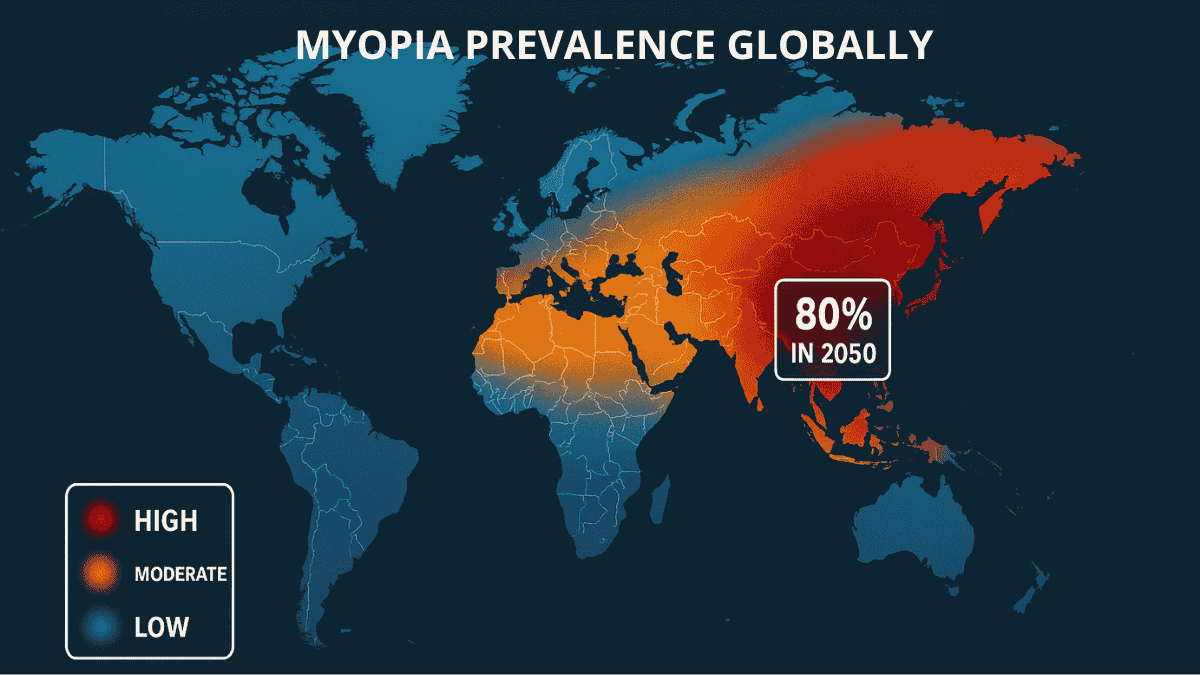
This increase is widely attributed to shifts in modern lifestyles. Key contributing environmental factors include reduced time spent outdoors and more hours devoted to near work, such as prolonged screen time for education or leisure. Consequently, public health initiatives are emerging in various regions to advocate for increased outdoor activity for children and to enhance awareness about effective myopia management and the importance of regular eye exams.
Ongoing research continues to investigate more effective strategies for preventing myopia or slowing its progression. The goal is to mitigate the long-term impact on vision and public health. Early detection through vision screenings and prompt intervention when myopia is diagnosed are key components of these efforts.
Conclusion
To summarize, what is myopia? It is a common refractive error where distant objects appear blurry because the eyes focus light in front of the retina, rather than directly on it. This article has explored its causes, such as eye length and corneal shape, common nearsightedness symptoms like squinting and headaches, and various management approaches from prescription glasses to myopia control treatments.
Myopia often begins in childhood or the teen years but can affect individuals at any age. Understanding this condition, including the myopia risk factors and how myopia is diagnosed, empowers you to take proactive steps for your eye care. Many treatments include options to not only correct vision but also potentially slow myopia progression.
With accurate diagnosis by an eye doctor and appropriate management, most people with nearsightedness can achieve clear vision and maintain their daily activities. Remember, consistent regular eye exams are fundamental for safeguarding your eye health, enabling early detection of any changes, and confirming your correction needed is always up to date. Taking care of your child’s eyes from early childhood through vision screenings can make a significant difference.
Frequently Asked Questions About Myopia (Nearsightedness)
Myopia, also known as nearsightedness, is a common vision condition where distant objects appear blurry while close objects can be seen clearly.
Yes, LASIK surgery can provide a long-lasting correction for myopia by reshaping the cornea to allow light to focus properly on the retina.
Ideal LASIK candidates are over 18, have stable vision for at least a year, and have a myopia prescription within a treatable range.
LASIK typically corrects up to -8.00 diopters of myopia, but eligibility depends on corneal thickness and eye health.
It can, up to a certain limit. Patients with very high myopia may require alternative treatments like phakic IOLs.
Most patients achieve 20/20 vision or better and no longer need glasses, though some may need them for specific tasks or with age.
LASIK corrects existing myopia but doesn’t prevent future progression. Stability before surgery is key.
Yes, LASIK is generally safe and effective when performed by experienced surgeons using advanced technology.
Risks include dry eye, glare, halos, and under- or overcorrection, but serious complications are rare.
The procedure itself takes about 10–15 minutes per eye, with the laser only used for a few seconds.
Most patients notice improved vision within 24 hours, with full clarity developing over days to weeks.
No, LASIK is not recommended until the age of 18, when vision has stabilized.
LASIK flattens the central cornea so light rays can focus more accurately on the retina.
No, numbing drops prevent pain during the procedure, and most patients report only mild discomfort afterward.
Many patients report better night vision, though some experience temporary halos or glare.
Rarely. Regression is possible, but enhancement surgery can often resolve it.
Yes. Options include PRK, SMILE, and implantable contact lenses, depending on eye health and prescription.
The average cost ranges from $2,000 to $3,000 per eye, depending on technology and surgeon experience.
Typically no, since LASIK is considered an elective procedure.
LASIK results are generally permanent, though age-related changes like presbyopia can occur later.
Yes, enhancement procedures are possible if your cornea is still healthy and thick enough.
Stop wearing contact lenses as advised, undergo pre-op eye tests, and follow your surgeon’s instructions closely.
A special device keeps your eye open, and advanced tracking technology adjusts for any movement.
Possibly. While most patients don’t need them after LASIK, wearing lenses later may be more difficult.
It’s rare, but possible due to aging or eye changes. Annual check-ups help monitor any changes.
Yes, LASIK can treat both conditions in one procedure if you’re a suitable candidate.
Most patients return to normal activities within 24 to 48 hours, though complete healing takes several weeks.
Yes, LASIK is commonly performed on both eyes during the same session.
Most patients enjoy stable vision long-term, though small changes can occur over time.
Look for board-certified surgeons, modern technology, high patient satisfaction, and clear pricing.


